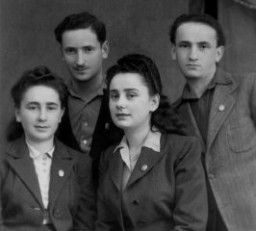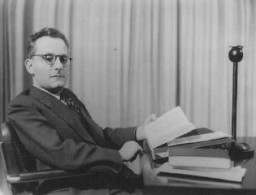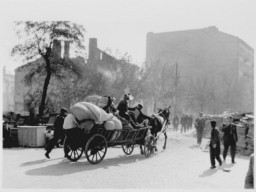You searched for: ���������������������������������������what���kaa2238���kp3j3xr
<< Previous | Displaying results 121-130 of 670 for "���������������������������������������what���kaa2238���kp3j3xr" | Next >>
-
Fire Oaths
Article“Fire Oaths” were statements that declared why the works of certain authors were thrown into the flames during the 1933 burning of books under the Nazi regime.

-
Jewish Uprisings in Camps
ArticleLearn more about Jewish prisoners and the various uprisings and armed resistance movements in killing centers and other Nazi camps.

-
Translation in the Courtroom
ArticleThe Nuremberg trials were an early experiment in simultaneous translation. Learn about the principles and technology involved in translating the trial proceedings.

-
Mira Shelub
ArticleRead the Jewish Partisan Educational Foundation's short biography of Mira Shelub.

-
Erich Kästner
ArticleErich Kästner was a popular political satirist and left-liberal author whose works were burned under the Nazi regime in 1933. Learn more.
-
Kurt Tucholsky
ArticleKurt Tucholsky was a German satirist who criticized the Nazis during their rise to power. In 1933, his works were burned under the Nazi regime. Learn more.
-
Max Brod
ArticleMax Brod was a Jewish author most widely known as the biographer and editor of Franz Kafka. His works were burned in the Nazi book burnings of 1933. Learn more.

-
Page from the Stroop Report
PhotoA page from SS officer Juergen Stroop's report on the Warsaw ghetto uprising. He wrote: "This is what the former Jewish residential quarter looks like after its destruction." Warsaw, Poland, April-May, 1943.

-
Refugees leave Warsaw
PhotoCivilians flee Warsaw following the German invasion of Poland. Hundreds of thousands of both Jewish refugees and non-Jewish refugees fled the advancing German army into eastern Poland, hoping that the Polish army would halt the German advance in the west. Many of the refugees fled without a specific destination in mind. They traveled on foot or by any available transport—cars, bicycles, carts, or trucks—clogging roads to the east. Most took only what they could carry.

-
Deadly Medicine
SeriesFrom 1933 to 1945, Nazi Germany carried out a campaign to "cleanse" German society of individuals viewed as biological threats to the nation's "health." Learn more
